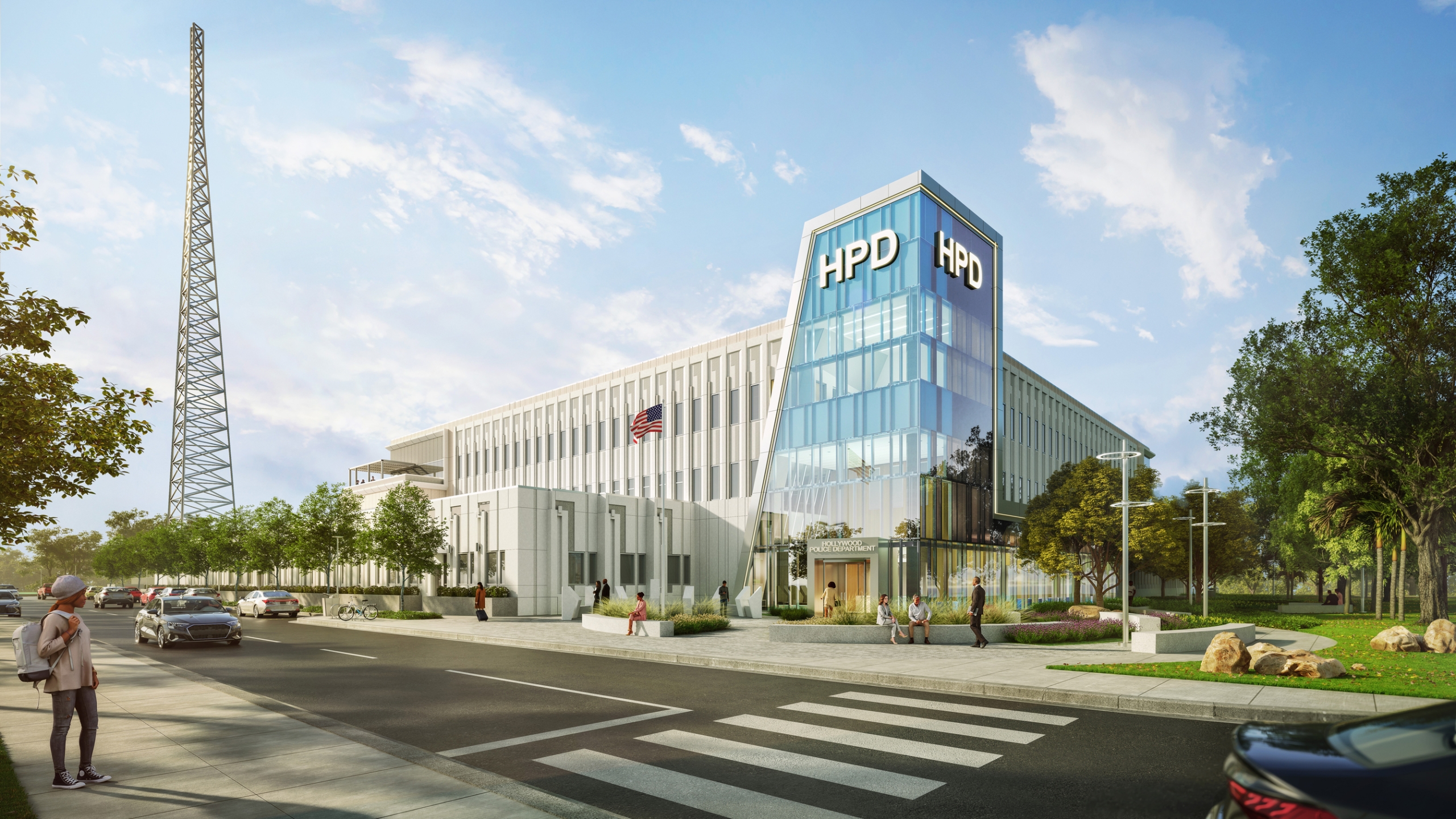New Police Headquarters Takes Strides in Carbon Footprint Reduction
The City’s New Police Headquarters building design is nearly complete, and construction is scheduled to start in mid-2024. The building has been designed to be welcoming to the public, operationally efficient and secure for the Police Department, and to minimize the carbon footprint of the project through the building’s entire life cycle.

The New Police Headquarters project has achieved several significant design milestones. The 60% Construction Documents are currently under review by the Building Department and are scheduled to be completed in early 2024. The site plan approval process is proceeding on schedule and anticipated to receive a recommendation from the Planning and Development Board in late 2023 and to receive site plan approval in early 2024. The project is scheduled to begin construction in mid-2024.
As part of its commitment to sustainability, the City recently completed the Whole Building Life Cycle Assessment (WBLCA) for the project. The WBLCA process evaluates various impact categories, including energy and resource use, global warming potential, and land/water acidification. The assessment focused specifically on the building’s foundation, structure, and parking garage to identify opportunities to reduce its carbon footprint. Over a building’s life cycle, approximately 33% of a building’s carbon footprint will be generated during construction, with the remainder of the carbon footprint generated during building operations. The WBLCA analysis identified two major contributors to the project’s construction phase carbon output (86.7% from materials and 9.2% from transportation) and revealed opportunities to reduce carbon emissions through key material choices on the project.
Understanding that construction activities represent such a large portion of the overall carbon footprint of the project, the City has brought together a group of industry experts from both academia and the private sector to collaborate with staff and the design team to minimize the Police Headquarters’ carbon footprint. Staff is working with Civil Engineering PhD professors and researchers from Florida International University’s College of Engineering, industry experts, manufacturers, and suppliers to provide valuable insights into balancing cost, scheduling, and the environmental impact of different construction materials. This cooperative effort is aimed at identifying innovative construction solutions that not only reduce the carbon footprint of this project, but also serve as a model for other City sustainability initiatives. From the baseline building at the Schematic Design phase to the current “as-designed” building, the Design team has reduced construction-phase carbon emissions for the New Police Headquarters building by 9.7%.
The building has also been designed to minimize carbon emissions due to ongoing operations. The building orientation, façade, and interior layout have been designed to bring natural light into the building to reduce the need for artificial lighting. The lighting throughout the building was designed with LED fixtures controlled by occupancy and lighting sensors, reducing overall energy use. By using smart building technology, the heating, ventilation and air conditioning systems will maintain a comfortable environment for staff while automatically reducing energy use in unoccupied areas, minimizing energy use throughout the building’s life cycle. Saving water is also important; plumbing fixtures have been chosen to minimize both water use and maintenance requirements. The building’s intentional energy-saving design choices extend throughout the site; the landscaping surrounding the building has been designed to maximize the use of native species and minimize the irrigation and maintenance required, and site lighting was chosen for both functionality and energy-efficiency. All the design features together will result in a significant reduction in energy use throughout the life cycle of the building when compared to a similar traditionally designed building.

